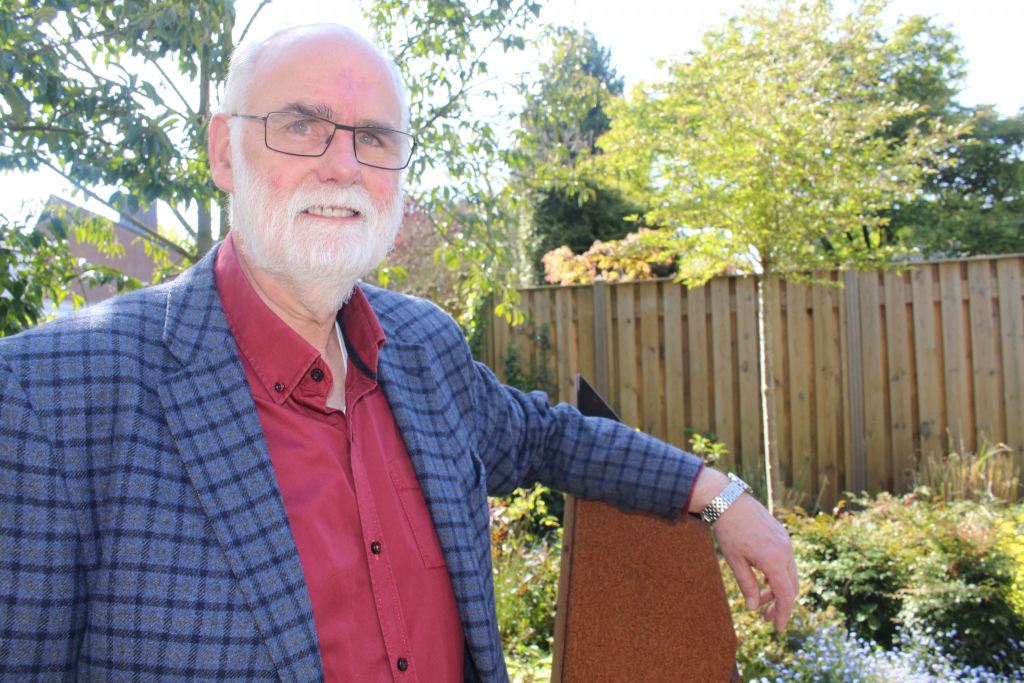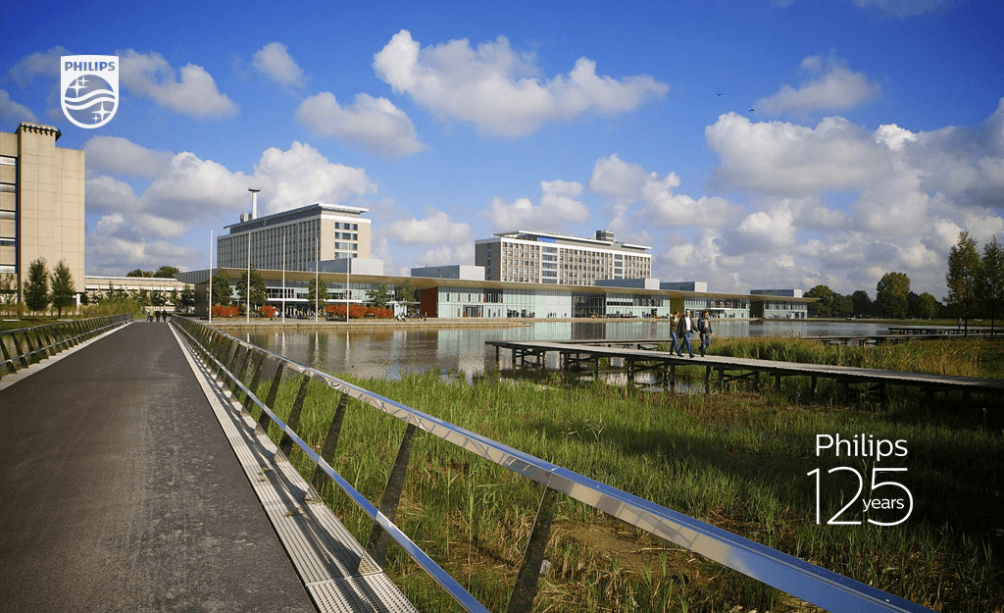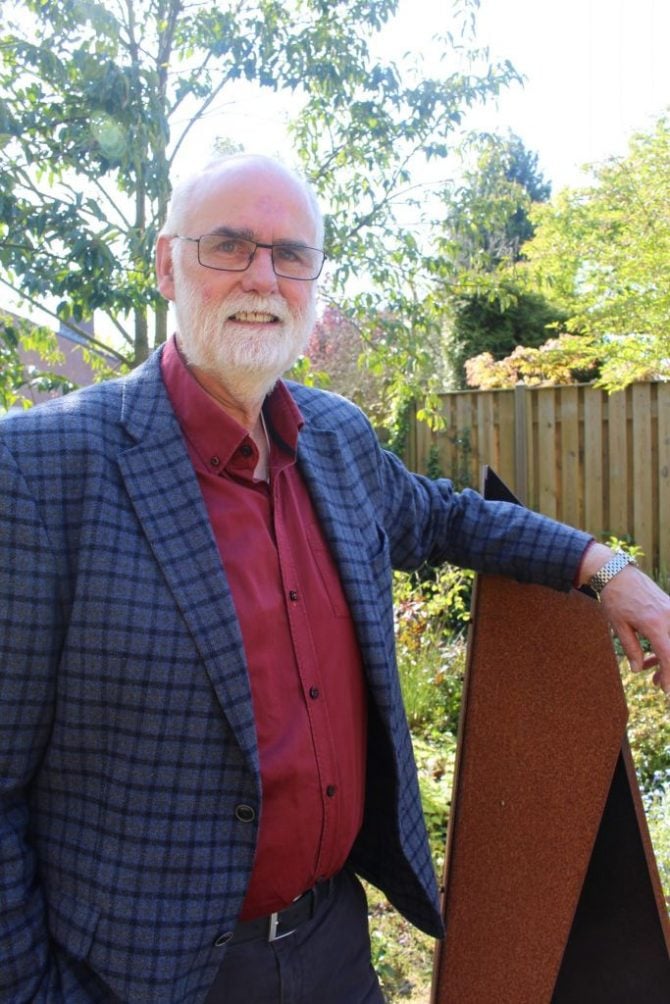
The reputation of the High Tech Campus Eindhoven is undisputed worldwide: one of the rare places where open innovation has resulted in an effective ecosystem around high tech hard & software. Where large and small, producer and supplier, competitor and colleague, strengthen the value chain together. What began as a place where Philips combined its own research activities around their “NatLab” in the nineties, has become a center where around 10,000 employees in 150 companies collaborate in research, innovation and business.
On the eve of the celebration of the 125th anniversary of Philips, former CTO Rick Harwig takes us back to the period that was so decisive for the current success. It was the time when the urge for open innovation and entrepreneurship and the need for efficiency reinforced each other.
About this need for efficiency: at the end of the eighties, Philips was in great financial problems. Under the leadership of CEO Jan Timmer, Operation Centurion was there to put an end to that situation. It not only led to massive layoffs, but also to the loss of various business units. Harwig at that time was still recovering from the disappointment coming from the folded project ‘Mega’: a collaboration with Siemens in the field of integrated memory products. Mega was a success content-wise but pretty much on the day that the finished product was delivered, the business killed the project. Harwig had to accompany the 525 people from the development and manufacturing center to a new future.

“They were without exception very talented people, so most of them found new jobs quite fast. In no time we found 3500 found different jobs where they could get to work. On a worldwide level, so when we recently got together again, they flew in from all corners of the globe.” Then, seriously again: “But for me this was a defining moment. I knew then for sure that we would never do a project in this way again. If Mega had shown anything it was the bankruptcy of the separate development of technology and business. ”
So for Harwig, the decision to bring together all research and development activities into one place was not only an efficiency operation, but also an opportunity to put his ideas on entrepreneurship and open innovation to work. “In the ’90s Philips R & D was fragmented among dozens of places around the world, each with its own traditions, and each having its own processes. That made the reconciliation sometimes rather complicated, so it was, especially considering the miserable position of Philips at that time, logical that all these activities were put together at the High Tech Campus. Fortunately I was not alone in my belief that the real efficiency could only be achieved in a system of open innovation and entrepreneurship. We had to learn to play outside.”
From the Linkedin profile of Rick Harwig:
Open Innovation
This is best or at Carried out through partnerships. The days of innovating in isolation are over. No one company can be expected to know all the answers. That’s why we regularly work together with a wide network of institutes, companies, universities and hospitals to Jointly develop meaningful new breakthroughs.
Minister Annemarie Jorritsma hit the first pole for “Philips High Tech Campus” in 1999. In the years that followed the original 3000 inhabitants of the NatLab area gradually gathered more colleagues around them. Initially from other Philips companies, but starting in 2002 also from the outside world. The incubators around technology, healthcare, lifestyle and lighting contributed to the new openness. It also demanded a new structure. There were patent offices, venture specialists, accountants and suppliers for infrastructure and services, all to make cooperation not only a sensible solution, but also a practical and properly organised one.
At the end of 2003, the High Tech Campus already contained 20 non-Philips companies, in 2008 there were 75, and after that, it doubled again. There were agreements with the universities of Eindhoven, Aachen and Leuven, Zhejiang in China and the Taiwanese were introduced. And they all reinforced the ideal of Harwig. “The great thing was, we suddenly turned out to be great cooperators. Not only with all the companies that emerged from Philips itself, such as NXP, ASML and FEI, but also with all the other ones. One can hardly guess how many new products have emerged thanks to a chance meeting during a lunch on the Strip of the campus. And by the way, not just new products. That cheese sandwich with a glass of milk has even prepared complete business units for privatization or sale, whereby the sold company would often remain as a supplier and sometimes with a whole new market focus in growing industry chains.

© IO
Philips gradually ‘lost’ more companies as a spinoff, which has only helped the success grow bigger, according to Harwig. “Of course you can sell products, but also companies. If it improves the development of product and business, this benefits everyone.” Harwig is convinced that all these spin-offs and spin-outs have helped Eindhoven tremendously. “It not only provided Philips with a lot of money, but also ensured that contacts were made with the whole world.”
Open innovation only works if there is mutual trust, Harwig knows. “You have to be prepared to snatch all the fences out of the ground.” In a literal sense, it seems that there is still a lot of de-fencing to be done, if you look at the campus. There is still a solid wall surrounding the smartest square kilometer of Europe; whoever wants to visit the campus after eight o’clock in the evening or on a Sunday, needs luck or a pass. “Certainly, this could be better, but it’s already a huge difference compared to the time of NatLab, when the site was truly impenetrable. Only Philips Staff was admitted and for children it was totally forbidden. As if they wanted to express that nobody would ever want to work there. And the barbed wire around the grounds faced inward: so if you were inside, there was no escape possible. These days the children have discovered the site as a shortcut between home and school and there are often public events.”
In 2010, Harwig left as CTO of Philips but from a distance he has kept an eye on the company, and on the campus. With pleasure, because he can now see that the choices he made back then were the right ones. Open innovation and entrepreneurship have brought Philips, the High Tech Campus and Eindhoven a lot. “Very good to see how the university has also followed that way of thinking. For example, look at the student teams that are built around themes of energy and mobility. Students who find ways to convert their technical skills into a possible business. Not alone, but together with others. Great to see that. Formerly it was ‘the lab is our world‘, now it is ‘the world is our lab‘.”

